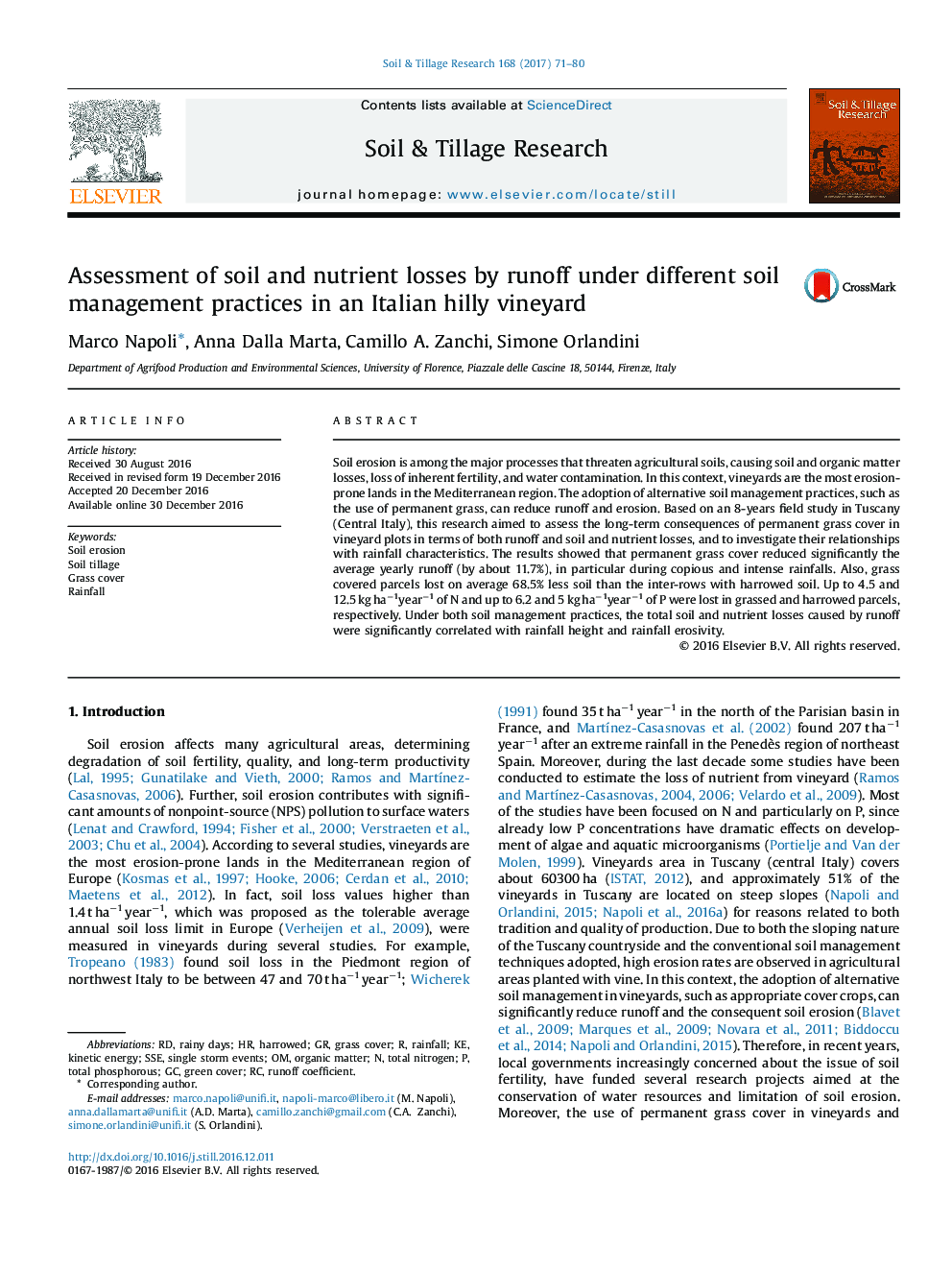| Article ID | Journal | Published Year | Pages | File Type |
|---|---|---|---|---|
| 4927551 | Soil and Tillage Research | 2017 | 10 Pages |
â¢We analysed the long-term consequences of soil management practices in vineyard plots.â¢We measured runoff, soil and nutrient losses on grass covered and harrowed inter-rows.â¢Permanent grass cover reduced significantly the average yearly runoff, soil and N losses.â¢Permanent grass cover increased P losses compared to soil tillage.â¢Rainfall eight and erosivity significantly affected soil and nutrient losses.
Soil erosion is among the major processes that threaten agricultural soils, causing soil and organic matter losses, loss of inherent fertility, and water contamination. In this context, vineyards are the most erosion-prone lands in the Mediterranean region. The adoption of alternative soil management practices, such as the use of permanent grass, can reduce runoff and erosion. Based on an 8-years field study in Tuscany (Central Italy), this research aimed to assess the long-term consequences of permanent grass cover in vineyard plots in terms of both runoff and soil and nutrient losses, and to investigate their relationships with rainfall characteristics. The results showed that permanent grass cover reduced significantly the average yearly runoff (by about 11.7%), in particular during copious and intense rainfalls. Also, grass covered parcels lost on average 68.5% less soil than the inter-rows with harrowed soil. Up to 4.5 and 12.5 kg haâ1yearâ1 of N and up to 6.2 and 5 kg haâ1yearâ1 of P were lost in grassed and harrowed parcels, respectively. Under both soil management practices, the total soil and nutrient losses caused by runoff were significantly correlated with rainfall height and rainfall erosivity.
